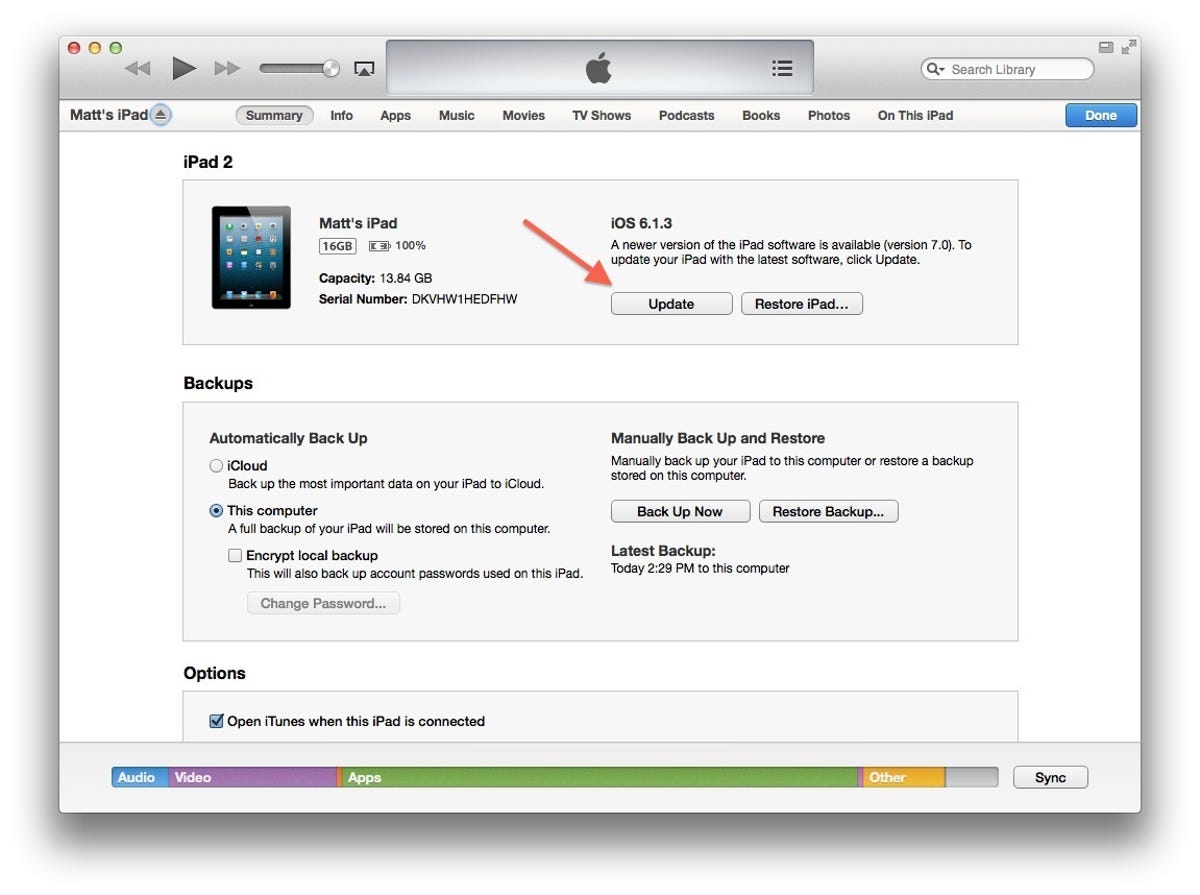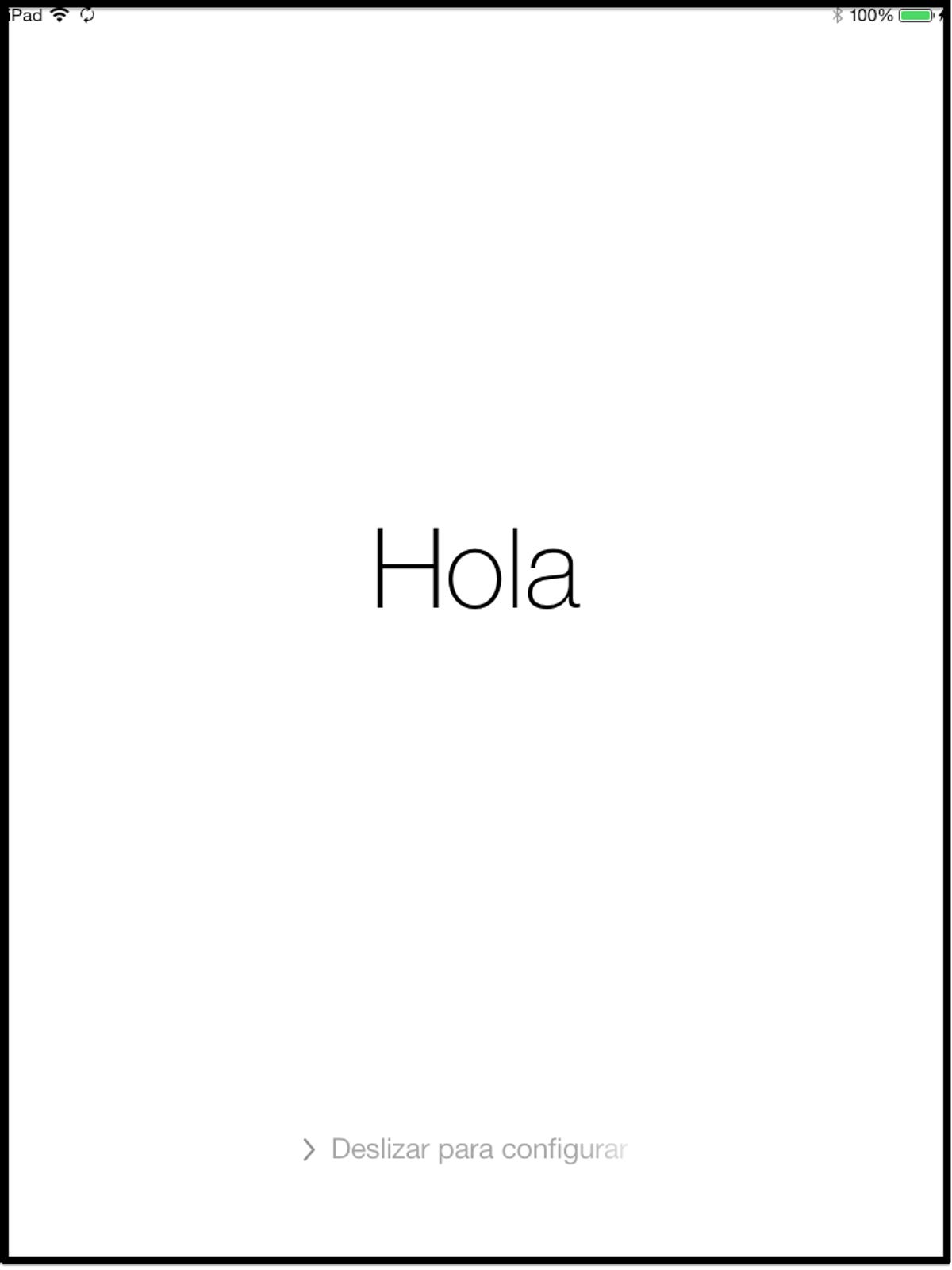

Now playing:
Watch this:
New look, new features in iOS 7
3:21
If you are like me, then you still have a few months to go on your current contract and will ride out your old iPhone and wait to buy a new iPhone 5S or iPhone 5C until you can get the discounted price that comes with signing on for another two-year plan. While you may miss out on getting a gold or a colorful plastic iPhone for the time being, it doesn’t mean you need to miss out on all of the fun.
Apple released iOS 7 today, and odds are you can update your current device to it. That is, you can update as long as you have a fairly recent iOS device. Here is Apple’s list:

Screenshot by Matt Elliott/CNET
If your iPhone, iPad, or iPod Touch is pictured above, then you can upgrade it to iOS 7 today and experience the radically new design and new features while you eagerly anticipate the expiration of your current contract.
There are two methods for downloading and installing iOS 7. You can simply update your iOS device over the air via the device’s Settings, or you can connect it to your computer and use iTunes. Before you update, however, it would be a good idea to back up your iOS device. In addition, there are a few other things to do before you install iOS 7, including upgrading to the most recent version of iTunes (11.1).
Method 1: Over the airIf you are on a Wi-Fi network, you can upgrade to iOS 7 without needing to bother with iTunes. Go to Settings > General > Software Update and click the Download and Install button for iOS 7. You may run into some issues today with Apple’s servers getting slammed by millions of iOS device upgraders. My download failed about a dozen times this afternoon before finally completing.


Screenshot by Matt Elliott/CNET
After tapping the Download and Install button (and crossing your fingers), you’ll need to tap to agree to Apple’s terms and conditions and either heed or ignore Apple’s advice to connect your device to a power source during the download to save battery.


Screenshot by Matt Elliott/CNET
Once you have successfully downloaded the file, which was 667MB for my 16GB iPhone 4S on Verizon, you’ll be greeted by an Install Now button. After the update installs and your device restarts, you’ll know immediately that you’re using iOS 7, right from its initial greeting:


Screenshot by Matt Elliott/CNET
Slide to configure iOS 7. You’ll need to click through the following setup screens:


Screenshot by Matt Elliott/CNET


Screenshot by Matt Elliott/CNET


Screenshot by Matt Elliott/CNET


Screenshot by Matt Elliott/CNET


Screenshot by Matt Elliott/CNET
Method 2: Via iTunes If you are near your computer with iTunes, it might be faster to update this way. In my experience, updating my iPad 2 via iTunes was faster than updating my iPhone 4S over the air. The first order of business is to update iTunes to version 11.1. Open iTunes and then click iTunes > Check for Updates to install the latest version.
Once iTunes is up-to-date, connect your iOS device. Click on your device in the upper-right corner of iTunes and then click the Update button.


Screenshot by Matt Elliott/CNET
A pop-up window will appear, alerting you that a new iOS version is available for your device. Click the Download and Update button. (Or, if you are going to need your phone in the near future, opt for the Download Only button to download it now and install later. iOS 7 is a 649MB download for my iPad 2 and took the better part of an hour to download and install via iTunes.)


Screenshot by Matt Elliott/CNET
If you chose to download and install the update, you can monitor its progress in the status window at the top of iTunes. Keep your device connected to your computer until your device restarts. After restarting, your device will greet you in any number of languages by the blinding white iOS 7 setup screen.


Screenshot by Matt Elliott/CNET
Slide to enter iOS 7’s setup process, which will have you tap through a handful of screens to configure settings, including Location Services, iCloud, iMessage and FaceTime, Find my iPad, and a passcode.
For more on Apple’s radically redesigned mobile operating system, read CNET’s full review of iOS 7.



